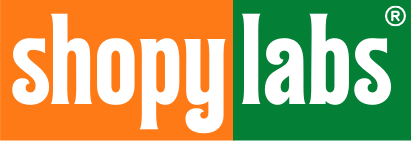Programmatic SEO refers to the automated creation of keyword-targeted web pages using data sources and page templates.
Instead of manually designing, writing, and publishing content, pages are generated automatically from back-end databases and APIs.
Leading companies like Zillow, Travelocity, and Amazon use some form of programmatic SEO to drive large volumes of targeted organic traffic to their sites.
The Benefits of Programmatic SEO
programmatic SEO offers several advantages over traditional SEO methods, including the ability to scale content quickly, improve user experience, enhance search visibility, and save time and resources.
The main benefits of this approach include:
Scalability: Programmatic systems can create thousands or even millions of pages from a single template. This allows for targeting of a huge number of related keywords and locations.
Automation: Once the initial work of designing templates and connecting data is complete, new pages can be continuously created and optimized with no ongoing manual effort.
Cost and Time Savings: Automating repetitive content creation tasks drastically cuts the human effort and costs associated with producing lots of niche pages.
How to get started with programmatic SEO
On a technical level, programmatic SEO relies on connecting databases and other data sources to page templates that can be filled dynamically with content.
Finding Scaling Keywords
The key to programmatic SEO is identifying patterns for hundreds or thousands of similar keywords that vary primarily by category, location, date, name, number or some other definable parameter.
For example,
“cost of living in [state]”,
“population of [city]”,
“[athlete] stats”,
“[company] careers”.
The content and data needed for such keywords will follow the same basic structure across all variations.
In tools like Ahrefs or SEMRush, you can use filters, comparators and regex to analyze keyword lists systematically.
Look for high search volumes, low difficulties and buyer intent centered around comparison or factual research rather than navigational seeking of brands.
Assess the first 20-30 search results to determine if there are clear commonalities around potential data sources and general page elements.
If much uniqueness exists already, programmatic scaling may be more difficult.
Understand the searcher intent very well before investing in building templates. Create user personas and journeys – what info do they expect to see?
Building for commercial transaction intents with lots of parameters around products, services and pricing also works very well for programmatic SEO at scale when data exists.
Sourcing and Managing Data
High-quality, structured data is the foundation of an effective programmatic content strategy. Potential sources include:
Proprietary Data: If your company sells products or services itself, exposing catalogs, pricing lists, user reviews and other databases through APIs offers unique SEO potential.
Licensed & Syndicated Data: Many public data sources like census records, sports stats, weather patterns, etc. can be licensed or accessed through official APIs.
Web Scraped Data: Tools like Import.io, Scrapy and Kimono can extract and structure data from other sites. Be careful of terms of use violations.
For best SEO outcomes and consistency, export these sources into centralized databases of your own. Set up ETL data pipelines to keep them in sync. BigQuery, MongoDB, Postgres, and AirTable are common database choices depending on types of data being used.
Make sure your collected data is clean, well-organized and formatted consistently to smoothly plug into page templates later on. Deduplication, normalization and ensuring schema integrity are key.
Exposing databases through REST and GraphQL APIs adds flexibility to securely connect them to a variety of applications and environments needed for managing and rendering content.
Optimizing Programmatic Pages
With data centralization and APIs powering automation flows in place, properly optimizing the page output across both semantic and technical fronts becomes crucial.
Each page should be appropriately meta-tagged, titled and structured around primary keywords and location names using data variables. Enable server-side caching and compression for fast page loads.
Interlinking both within a content cluster and out to other related pages helps inform search engines of topical relevance and hierarchy.
Common Challenges and Solutions
While automating SEO at scale brings strategic benefits, technical and qualitative hurdles exist:
Caching and indexation issues are common, and templates might need tweaking for crawler visibility. Closely monitor using tools like ScreamingFrog.
Balancing content personalization with site speed can involve decisions around static vs dynamic pages. Fine tune server-side rendering for improved SEO capability.
Stopping spam and fraud will require content policies and technical responses akin to typical UGC sites. Moderation workflows need definition.
As laws evolve, ensure usage, display and sourcing of third-party data complies with copyright and data protection regulation. Proactively self-monitor.
Conclusion
The programmatic creation of targeted, templated content offers the potential for both ranking visibility and visitor satisfaction. By tapping into data flows to automate page output, limitless opportunities open up to provide customized yet scalable experiences aligning to searcher needs.
Use this guide’s strategic frameworks around understanding intent, finding keywords, handling data and architecting systems to inform and streamline your own programmatic SEO initiatives – taking site growth to new horizons.

